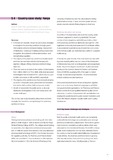Country case study: Kenya

View/
Date
2009Author
Thoithi, G N
Faith, A
Type
OtherLanguage
enMetadata
Show full item recordAbstract
• In the last two decades, Kenya has put in place strategies to strengthen the pharmacy workforce through government policies aimed at increased training; improvement of distribution; creating an enabling working environment; recognition; financial and nonfinancial incentives; and strengthening regulation.
• The majority of the pharmacy workforce is locally trained and there are now three schools of pharmacy and eighteen colleges offering pharmaceutical technology diplomas.
• There has been an increase in the number of pharmacists from 1,866 in 2002 to 2,775 in 2008, while pharmaceutical technologists have increased from 1,399 in 2002 to 2,324 in 2009, an increase of 48% and 66%, respectively.
• The majority of the workforce is in the community pharmacy sector. In the public sector, personnel have increased from 433 in 2005 to 609 in 2008, an increase of 40%.
• Growth of personnel in the public sector, rural-urban distribution and regulation of the community sector still remain challenges.
This country case study describes policy reform and other strategies that have led to strengthening of the pharmacy workforce in Kenya.
URI
https://www.fip.org/files/fip/HR/2009/2009%20GPWR%20Part%205.4%20Kenya.pdfhttp://hdl.handle.net/11295/40775
Citation
Thoithi, G. N., & Faith, A.,2009; 5.4 Country case study: Kenya.Publisher
University of Nairobi School of pharmacy
